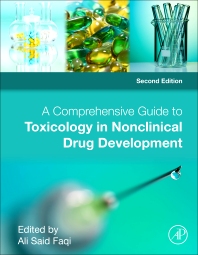Books in Toxicology testing and evaluation
Books in Toxicology testing and evaluation

A Comprehensive Guide to Toxicology in Nonclinical Drug Development
- 3rd Edition
- Ali S. Faqi
- English

The History of Alternative Test Methods in Toxicology
- 1st Edition
- English

Mutagenicity: Assays and Applications
- 1st Edition
- Ashutosh Kumar + 3 more
- English

A Comprehensive Guide to Toxicology in Nonclinical Drug Development
- 2nd Edition
- Ali S. Faqi
- English

Genetic Toxicology Testing
- 1st Edition
- Ray Proudlock
- English

Biomarkers in Toxicology
- 1st Edition
- Ramesh C. Gupta
- English

Essays in Toxicology
- 1st Edition
- Wayland J. Hayes
- English

Histopathology of Preclinical Toxicity Studies
- 3rd Edition
- Peter Greaves
- English